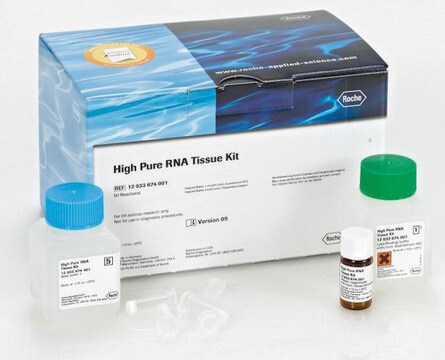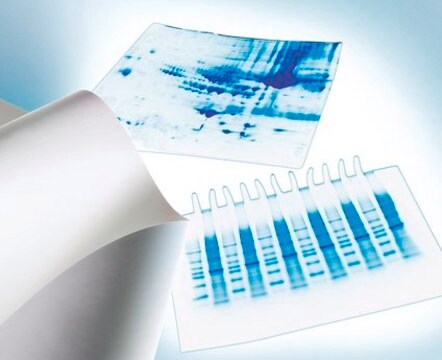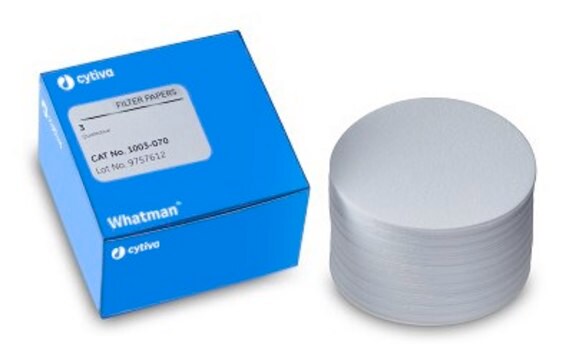11796828001
Roche
High Pure PCR Template Preparation Kit
pkg of 100 purifications, suitable for DNA extraction
Synonyme(s) :
DNA extraction
About This Item
Produits recommandés
Utilisation
sufficient for 100 purifications
Niveau de qualité
Fabricant/nom de marque
Roche
Conditionnement
pkg of 100 purifications
Technique(s)
DNA extraction: suitable
Catégories apparentées
Description générale
High Pure PCR Template Preparation Kit; Instructions For Use
Nucleic acids bind to the surface of the glass fiber fleece in the presence of a chaotropic salt (guanidine HCl). This allows the High Pure filter tube to specifically immobilize nucleic acids (both DNA and RNA) while they are freed of contaminants.
Note: A special Inhibitor Removal Buffer is included which allows the use of heparinized sample material (100 U/mL of heparin). This buffer increases the sensitivity and reproducibility of assays performed with the isolated nucleic acid, even when the sample contains heparin.
Capacity: The High Pure Spin Filter Tubes hold up to 700 μL sample volume.
Application
- Long-template PCR
- Real-time, quantitative PCR
- SNP detection
- Southern blotting
- Cloning
Caractéristiques et avantages
- Minimize DNA loss using a kit that removes contaminants without precipitation or other handling steps that degrade DNA.
- Recover high molecular weight DNA (30 to 50 kb) that is suitable for long-template PCR.
- Improve reliability and reproducibility in downstream applications (real-time, quantitative PCR).
- Save time and maximize flexibility by preparing multiple PCR templates simultaneously.
- Eliminate the use of hazardous organic compounds such as cesium chloride, phenol, chloroform, and ethidium bromide.
Composants
- Tissue Lysis Buffer
- Binding Buffer
- Proteinase K, recombinant PCR grade
- Inhibitor Removal Buffer
- Washing Buffer
- Elution Buffer
- High Pure Filter Tubes
- Collection Tubes
Qualité
Principe
Informations légales
Mention d'avertissement
Danger
Mentions de danger
Classification des risques
Acute Tox. 4 - Acute Tox. 4 Oral - Eye Dam. 1 - Resp. Sens. 1 - Skin Irrit. 2 Inhalation - Skin Sens. 1 - STOT SE 3
Organes cibles
Respiratory system
Code de la classe de stockage
12 - Non Combustible Liquids
Classe de danger pour l'eau (WGK)
WGK 2
Point d'éclair (°F)
does not flash
Point d'éclair (°C)
does not flash
Certificats d'analyse (COA)
Recherchez un Certificats d'analyse (COA) en saisissant le numéro de lot du produit. Les numéros de lot figurent sur l'étiquette du produit après les mots "Lot" ou "Batch".
Déjà en possession de ce produit ?
Retrouvez la documentation relative aux produits que vous avez récemment achetés dans la Bibliothèque de documents.
Les clients ont également consulté
Notre équipe de scientifiques dispose d'une expérience dans tous les secteurs de la recherche, notamment en sciences de la vie, science des matériaux, synthèse chimique, chromatographie, analyse et dans de nombreux autres domaines..
Contacter notre Service technique










